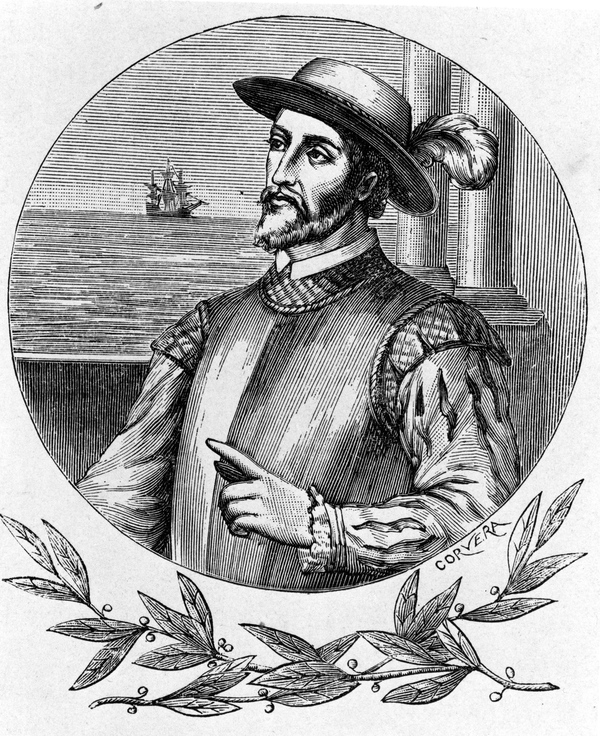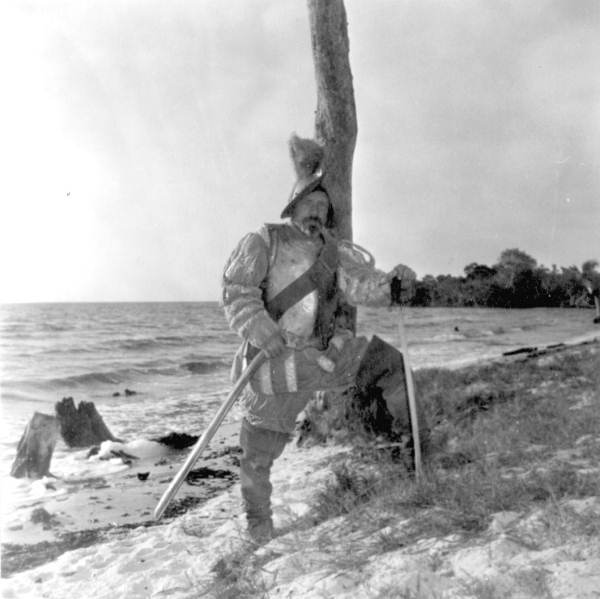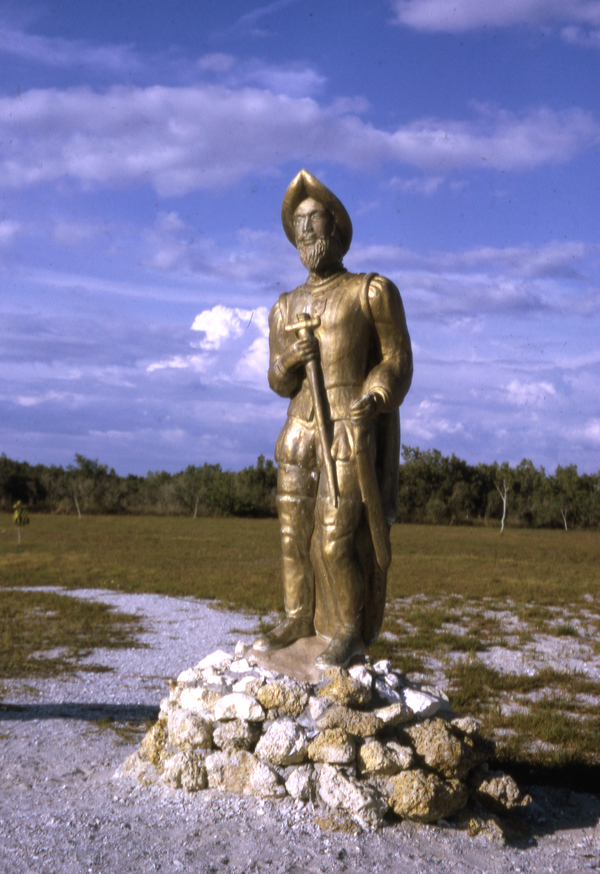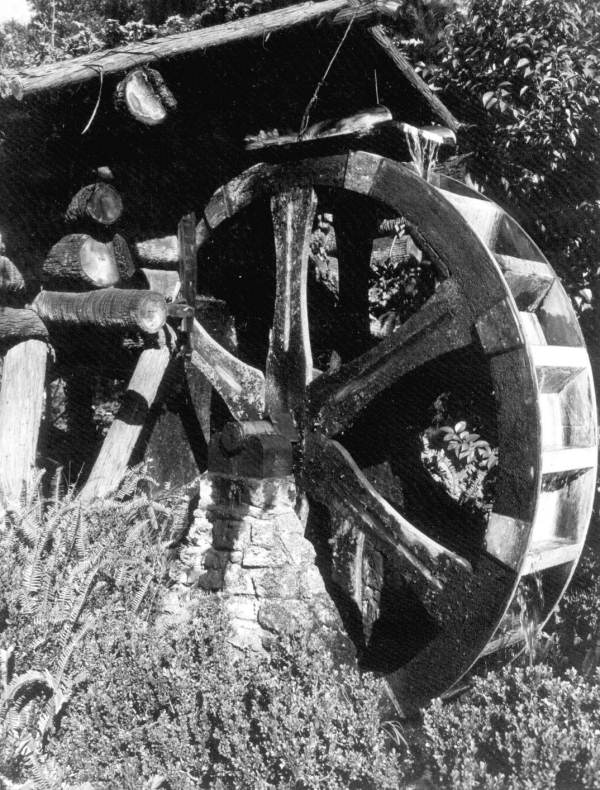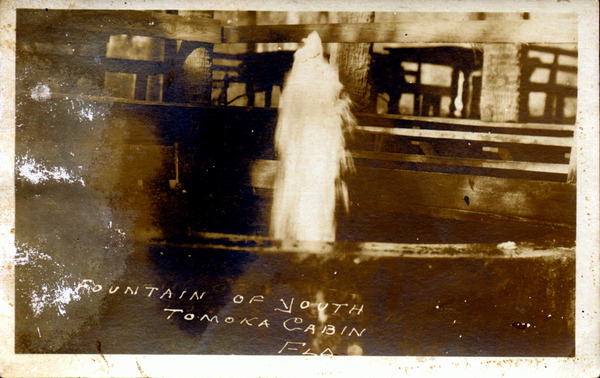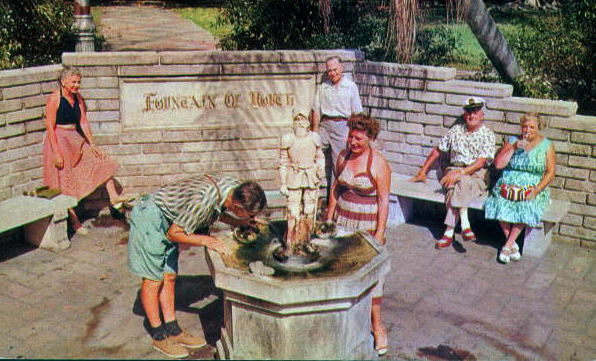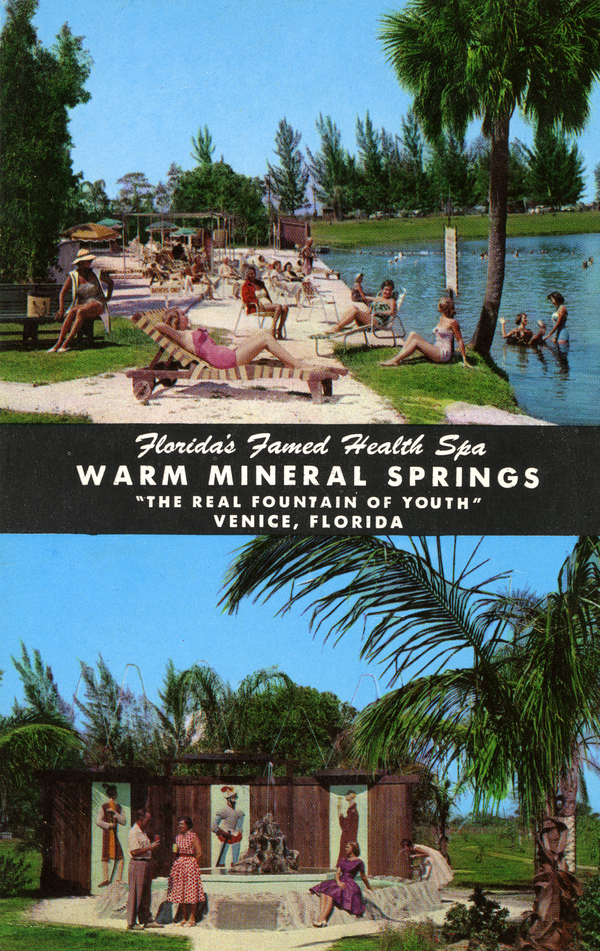Description of previous item
Description of next item
Florida Fountains of Youth
Published November 11, 2014 by Florida Memory
The legend of Spanish explorer Juan Ponce de Leon's quest to find the Fountain of Youth is one of the most popular stories in Florida history and culture. Books, paintings, movies, and even live pageants depict old Ponce as the guy who was convinced he would find a fountain in Florida whose waters would turn back the hands of time and keep anyone who drank from it or bathed in it young. He never found the fountain, of course, or else we'd refer you to him for the full story. We can, however, tell you a bit about Ponce's exploration of Florida and the fountains of youth his journey has inspired over the years since his departure.
You might be surprised to learn that for all the hoopla about Ponce's fountain quest, no documents from his lifetime survive to prove that the fountain was the object of his mission at all. Stories of such a fountain had already been around for centuries, sort of like that of the Holy Grail. Ponce would certainly have been aware of these stories, but evidence is lacking that he put much effort into finding out if they were true. The legend of Ponce's search for the fountain of youth seems to start years after his death, when a chronicler of the Spanish court wrote a history of his expeditions. In reality, the explorer was more likely prodded by the prospect of finding gold and land, as well as the Spanish king's promise to make him governor of the territory he discovered.
Whatever his motivation, Ponce set out from Puerto Rico to explore on March 3, 1513. On March 27 the crew spotted land, and after a few more days they went ashore and Ponce claimed the land for Spain. All of this took place during Pascua Florida, the traditional "feast of flowers," and accordingly Ponce decided to call the new territory Florida. The exact location of his landing is uncertain, although plenty of theories exist. Most guesses have him going ashore somewhere between St. Augustine and the mouth of the St. Johns River. After claiming possession of Florida, Ponce and his ships moved down the east coast, along what is now the Florida Keys, and then into the Gulf of Mexico. Depending on which historian you ask, he then made it as far as Charlotte Harbor or maybe even Pensacola Bay before returning to Puerto Rico.
Ponce later made a second voyage to Florida, this time equipped to stay for a while. He brought two ships, 200 colonists, 50 horses, cows, pigs, and everything necessary to set up a permanent colony. Florida was no empty territory at this time, however. The fledgling settlement, likely located near Charlotte Harbor, came under fierce attack from the native Calusa Indians, who did not appreciate the Spaniards' intrusion. Several settlers were killed, and Juan Ponce was badly wounded by an arrow. The expedition decided to cut its losses and retreat. The ships sailed to Cuba, where Ponce died of his wound. His remains were shipped back to Puerto Rico for burial, and it would be several more years before another permanent Spanish settlement was attempted.
Statue of Juan Ponce de Leon near the historical marker in Punta Gorda commemorating his establishment of a colony near Charlotte Harbor, 1972
While Ponce may not have actually done much searching for the famous fountain of youth, the romantic allure of the story has been irresistable to generations of Florida visitors. Business owners have capitalized on this trend, too. Take, for example, the Fountain of Youth Archaeological Park in St. Augustine. Since the 1860s, the park has delighted visitors with its collection of Old Florida attractions, all centered around a spring reputed to be mentioned in accounts of Ponce's original landing in 1513.
The Fountain of Youth Park in St. Augustine, 1907. The "Luella Day" who signed the photo was Luella Day McConnell, known locally as "Diamond Lil." She purchased and enlarged the attraction in the early 1900s.
An old water mill, one of the attractions at the expanded Fountain of Youth park in St. Augustine, 1946
Another would-be Fountain of Youth appears in this postcard, which depicts the "Tomoka Cabin" near Ormond Beach. Shortly after the Hotel Ormond opened for business in 1888, the proprietors built this small structure next to the serene waters of the nearby Tomoka River. Hotel guests would often bring picnic lunches to this spot and spend the day exploring. The fountain seen here was part of the mystique of the place. At least one visiting group probably wished it was purveying something other than youth or mineral water. Local legend has it that a group of visitors was once stranded here when the hotel staff left them overnight. The weather became so cold they burned the furniture for heat!
The Gulf Coast has its share of candidates as well. St. Petersburg features a "Fountain of Youth Park," complete with a fountain fed by a mineral spring.
To the south in Sarasota County, Warm Mineral Springs has its own Fountain of Youth. The proprietors were quick to note that this was the "real" one. Unlike most of Florida's springs, this one is quite warm. Each day, about 17,000 gallons flow from the springs every three minutes. The temperature is about 87 degrees Fahrenheit year-round. The site was added to the National Register of Historic Places in 1977.
We at Florida Memory are convinced that all of Florida's beautiful springs qualify as fountains of youth. They might not erase wrinkles and sun spots, but they do help roll back the years by providing a place for the entire family to relax and have fun.
Cite This Article
Chicago Manual of Style
(17th Edition)Florida Memory. "Florida Fountains of Youth." Floridiana, 2014. https://www.floridamemory.com/items/show/295233.
MLA
(9th Edition)Florida Memory. "Florida Fountains of Youth." Floridiana, 2014, https://www.floridamemory.com/items/show/295233. Accessed January 9, 2026.
APA
(7th Edition)Florida Memory. (2014, November 11). Florida Fountains of Youth. Floridiana. Retrieved from https://www.floridamemory.com/items/show/295233

 Listen: The FolkFolk Program
Listen: The FolkFolk Program
